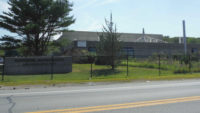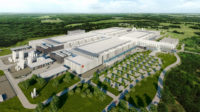Federal officials reached a settlement with an agricultural and industrial chemical manufacturer to clean hazardous waste at a shuttered phosphate products plant in Louisiana, they announced July 14.
The company, PCS Nitrogen Fertilizer LP, will cover the $84-million cost of closing the facility in Geismar, La., and pay a $1.5-million civil penalty resolving allegations that it failed to properly manage hazardous wastes that were disposed of in surface impoundments. The U.S. Dept. of Justice, U.S. Environmental Protection Agency and Louisiana Dept. of Environmental Quality were involved in the settlement agreement.
PCS Nitrogen, which is a unit of Canadian firm Nutrien Ltd., will treat more than 1 billion lb of acidic hazardous process wastewater at a newly built water treatment plant as part of the settlement. Additionally, the settlement sets the long-term closure of the site’s phosphogypsum stacks—known as gypsum stacks—and surface impoundments with 50 years of post-closure care.
The facility, located between Baton Rouge and New Orleans, operated from the 1960s until 2018. Since then, PCS Nitrogen has worked to decommission and dismantle the plant, close the gypsum stack system and install a water treatment system, the EPA says.
“This is a very important outcome as the facility is located in an area prone to hurricanes, and the financial assurance secured will protect taxpayers from paying future closure and cleanup costs,” Larry Starfield, acting assistant administrator of EPA’s office of enforcement and compliance assurance, said in a statement.
The settlement is a final step that formalizes the mitigation efforts made before the plant’s closure and since, Richard Holder, general manager of the Geismar site, said in a statement.
“We have worked closely with state and federal authorities during this process and these consent decrees and state orders document the resolution of issues arising from that cooperation,” Holder said.
Holder added that the company may look to build a clean ammonia plant at the Geismar site that he said could be the world’s largest facility of its kind.






Post a comment to this article
Report Abusive Comment